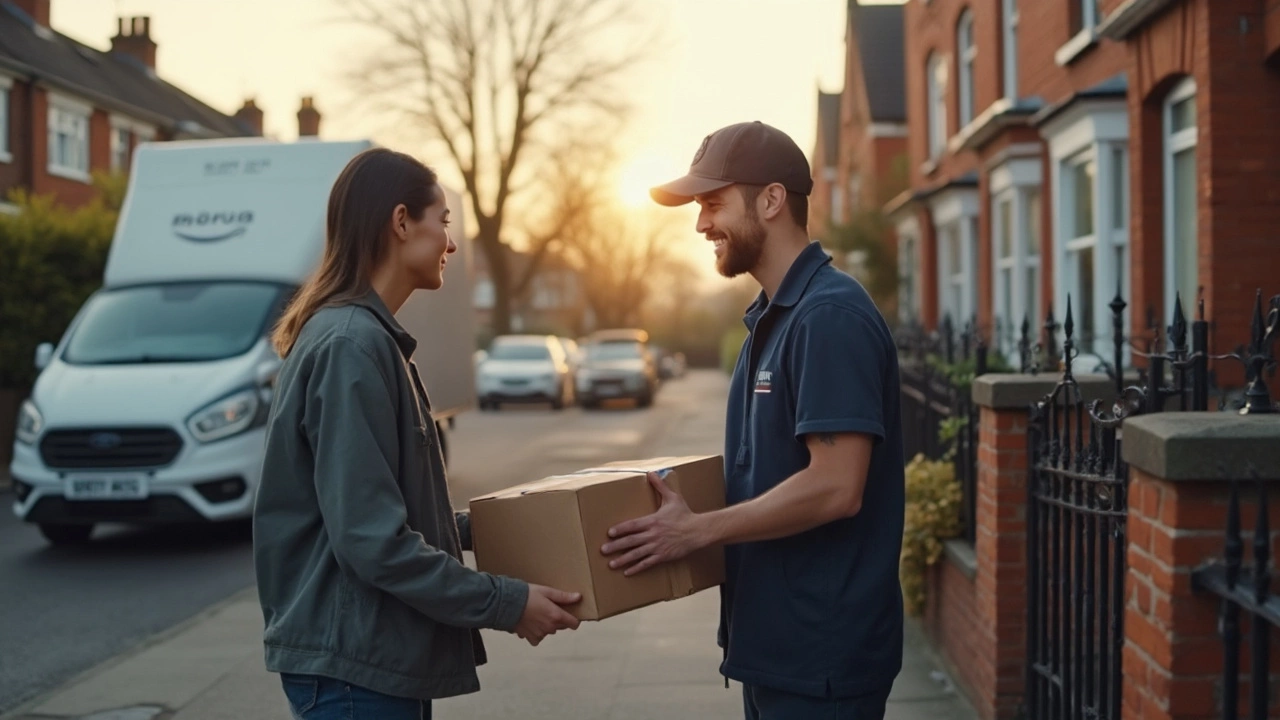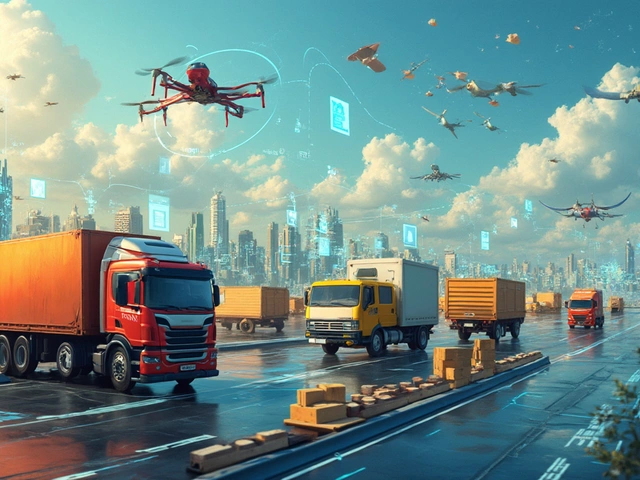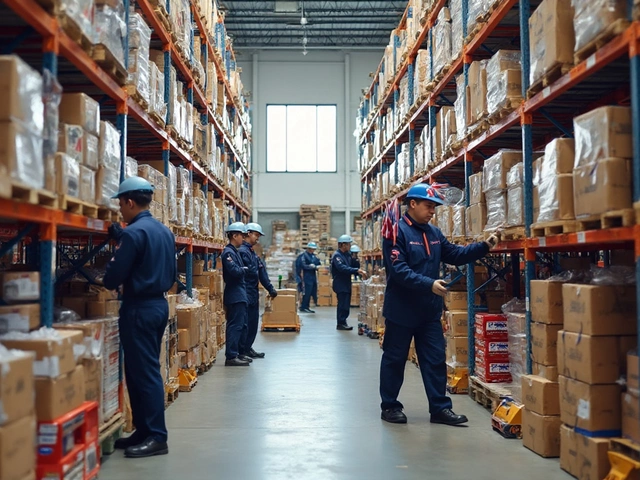Ever tracked your Amazon order and noticed names like "Amazon Logistics" or suddenly found your package delivered by someone who looked like your neighbor? It’s actually not a fluke. Amazon has created a massive delivery network that works in a couple of different ways, each with its own quirks. If you’re curious about who’s actually dropping those smiling boxes at your door—and why it matters—stick around as we dive into how Amazon delivery and Amazon Logistics play their roles.
If you order a coffee mug on Prime and it arrives same-day, you might assume it all happens with the same delivery team. Actually, that’s not the case. Sometimes Amazon uses its own drivers and vans; other times, you’ll see your package turn up with UPS, FedEx, the USPS, or even a local courier. The difference can affect your delivery speed, your ability to track packages, and how you handle issues like missed deliveries. So let’s clear up the confusion and get you the info you need to make Amazon work even better for you.
- How Amazon Delivery Works
- What is Amazon Logistics?
- Key Differences and Why They Matter
- How These Choices Affect Buyers and Sellers
- Tips for a Smooth Delivery Experience
How Amazon Delivery Works
Every time you place an Amazon order, the process starts behind the scenes as soon as you click "Buy Now." Amazon's own shipping network plays a big part, but it's actually a mix of systems and teams. First, items are picked, packed, and labeled in one of Amazon’s huge fulfillment centers. These gigantic warehouses are spread across the country, and each is packed with conveyor belts, robots, and people hustling to get things moving quickly.
Once your package is ready, Amazon decides the fastest way to get it to you. Sometimes, they hand it off to traditional carriers like UPS, FedEx, or the postal service. But they’re increasingly using their own vans and contracted drivers, which is where things get interesting. Delivery routes are mapped by computers to avoid traffic and save time, and packages are bundled by neighborhood to make it more efficient.
The real magic is in the tracking. Amazon gives you real-time updates—sometimes down to ten stops away—which helps reduce porch piracy and missed packages. Custom notifications can alert you when the delivery is close, and there’s even an option for Amazon Key in some zip codes, which lets you get packages dropped off inside your door or garage.
- Big-city deliveries often happen with Amazon’s blue Prime vans or small white delivery vans from local partners.
- In rural areas, you might still see your box come with the regular mail because Amazon partners with USPS to reach those locations.
- If you're seeing same-day or next-day delivery, that's usually Amazon's own network in action, optimized for speed.
One thing that sets the Amazon system apart is flexibility. Sometimes, Amazon drivers deliver on weekends and holidays, even when other carriers take a break. That’s a big reason why the Amazon delivery experience can feel so fast and convenient compared to regular online shopping.
What is Amazon Logistics?
Amazon Logistics is Amazon’s own delivery network that handles a huge chunk of orders, especially in major cities and suburbs. Instead of depending on old-school carriers like UPS or FedEx, Amazon hires local drivers—called Delivery Service Partners (DSPs)—who use Amazon-branded vans, cars, or even bikes to drop off your packages. These drivers often work for small delivery companies that partner just with Amazon. Sometimes, you might even get your stuff from someone using their own sedan for last-mile delivery; this is called Amazon Flex, and those drivers are basically gig workers who use an app to snag shifts whenever they want.
The main goal? Faster and more flexible shipping, especially for Prime members who want everything now—not in a week. With Amazon Logistics, you get things like same-day or next-day delivery, weekend drop-offs, and crazy-fast tracking that updates every few stops. Amazon even delivers on Sundays, which traditional carriers rarely do. In a lot of neighborhoods, you’ll spot those blue vans buzzing around even late at night.
There are a couple of key things about Amazon Logistics:
- It only handles Amazon packages, so don’t expect your eBay or Zara orders to arrive via these vans.
- The tracking experience is often more detailed than what you get from, say, USPS. You typically see out-for-delivery updates, a real-time GPS map, and sometimes even a photo of your package on your doorstep (thanks to Amazon Photo on Delivery).
- Amazon uses route planning software to get stuff to your door more efficiently, meaning you’ll sometimes see your neighbor’s order delivered on the same run as yours.
Because Amazon Logistics is all about speed and control, Amazon doesn’t have to rely on third parties as much anymore. That’s how they manage to pull off things like overnight shipping and those last-minute "Amazon Day" deliveries. It’s a core part of Amazon delivery and has changed the way e-commerce packages move across the country.
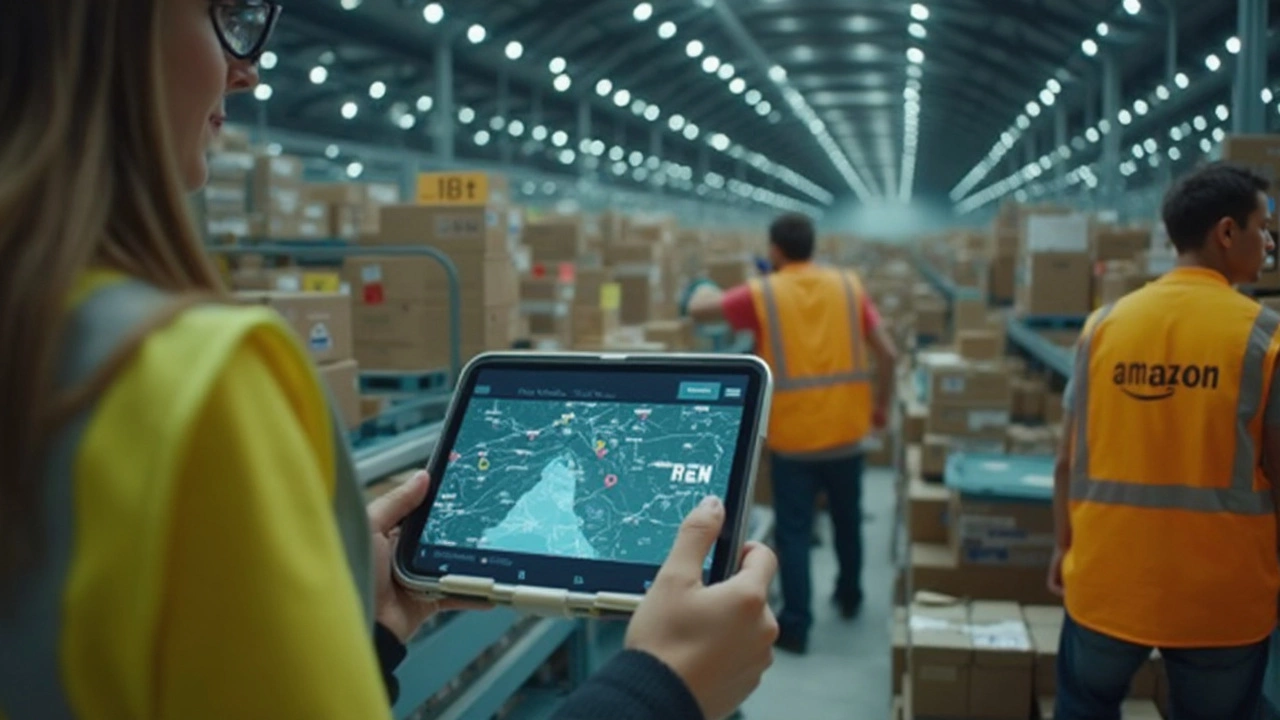
Key Differences and Why They Matter
The main thing that trips people up is thinking "Amazon delivery" and "Amazon Logistics" are the same thing. They’re not. "Amazon delivery" is just a broad way to say any package shipped by Amazon. But when you see "Amazon Logistics" on your tracking info, it specifically means the package is handled entirely by Amazon’s own shipping network—not UPS, FedEx, or the post office.
Amazon Logistics is huge now. By 2024, Amazon delivered almost 4.5 billion parcels in the U.S. through its Logistics service, according to Pitney Bowes. That’s more than FedEx handled the same year. Pretty wild, right?
Here are some key differences:
- Amazon delivery might mean your package shows up via USPS, FedEx, or UPS—especially in rural areas or if Amazon’s vans aren't available. Amazon Logistics, though, uses only Amazon drivers and vehicles (including those little blue Prime vans and even independent local drivers with the "Flex" program).
- Tracking is way better with Amazon Logistics. You can see your package’s route practically in real time. Sometimes you’ll get a photo when it’s dropped at your door. That rarely happens with third-party carriers.
- Delivery times differ. If you’re in a city, Amazon Logistics might offer late-night and even some Sunday drop-offs. With traditional carriers, those time slots are a lot more limited.
- If there’s an issue—like a lost package—Amazon steps in right away for Logistics shipments. With other carriers, you might have to chase down the shipping company yourself.
There’s another thing: Amazon Logistics isn’t just fast—it’s flexible. A 2023 survey by Rakuten Intelligence showed that Amazon packages delivered by their own service arrived on time 97% of the time. Packages handled by outside shipping partners hit about 91%.
| Aspect | Amazon Logistics | Other Carriers (UPS/USPS/FedEx) |
|---|---|---|
| Tracking Detail | Real-time, with map and photo | Basic updates |
| Delivery Days | 7 days/week, even evenings | Weekdays, some limited weekends |
| Support Speed | Directly from Amazon, quick replacement | Have to contact shipper, slower process |
| Coverage | Mainly cities/suburbs | Nationwide, including remote areas |
| On-time Rate (2023) | 97% | 91% |
Amazon’s VP of transportation, Dave Clark, said,
"We built Amazon Logistics because we needed reliability and speed that we couldn't always get with the big carriers. It’s all about giving customers more control and better delivery because that’s what people expect now."
This really matters if your area only gets limited service or if you get a lot of time-sensitive packages. If you sell on Amazon, you might notice fewer lost or late packages with Amazon Logistics, which means less hassle and fewer bad reviews.
How These Choices Affect Buyers and Sellers
The way Amazon handles who delivers your order isn’t just for show. It actually makes a difference for both customers and sellers—sometimes in ways you might not expect. Here’s what you need to know if you shop or sell on Amazon.
If you’re a regular shopper, you’ve probably seen your tracking say “Out for delivery with Amazon Logistics.” This matters because Amazon Logistics drivers use their own app to help get things delivered faster, and deliveries happen seven days a week, even on Sundays. USPS or UPS might take a day off, but Amazon Logistics keeps moving, giving shoppers a better shot at getting their stuff on time—especially with Prime.
But there’s a catch. Amazon Logistics deliveries don’t always look as official as big-name shippers. Packages may show up on your doorstep earlier in the morning or even late at night, and drivers are often independent contractors or work for small local companies. This sometimes means neighbors (or even you yourself) can deliver Amazon packages thanks to programs like Amazon Flex. That’s great for speed, but it can also mean you find your order tucked in unexpected places or left without a knock.
For Amazon sellers, especially small businesses using Fulfillment by Amazon (FBA), which is part of Amazon logistics, these delivery differences can affect ratings and reviews. Fast, reliable shipping with clear tracking makes customers happier—and more likely to leave five-star feedback. If your product gets delayed because of a third-party carrier like USPS, you might get blamed anyway. When Amazon controls more of the delivery process, sellers have a little more confidence that customers will get what they ordered, when promised.
Another interesting point: lost or stolen packages. Amazon handles missing packages differently depending on who dropped them off. Amazon Logistics deliveries usually have photo proof and detailed tracking. If you need to file an A-to-Z Guarantee claim, Amazon generally sorts it out faster if their own driver delivered your package, compared to older methods with UPS or local mail.
- If you’re a buyer: Watch for detailed tracking, delivery photos, and updates through the Amazon app if the shipment is handled by Amazon Logistics. If you spot a problem, report it fast—Amazon fixes issues the quickest this way.
- If you’re a seller: Choose FBA for higher control over order fulfillment and fewer headaches with lost shipments or negative reviews about “late packages.” Evaluate which carriers your products use based on where your customers live.
The takeaway? Who delivers your package can shape the whole shopping experience, from how fast your package arrives to how easy it is to fix a problem. Understanding the differences helps both shoppers and small businesses get more from every Amazon order.
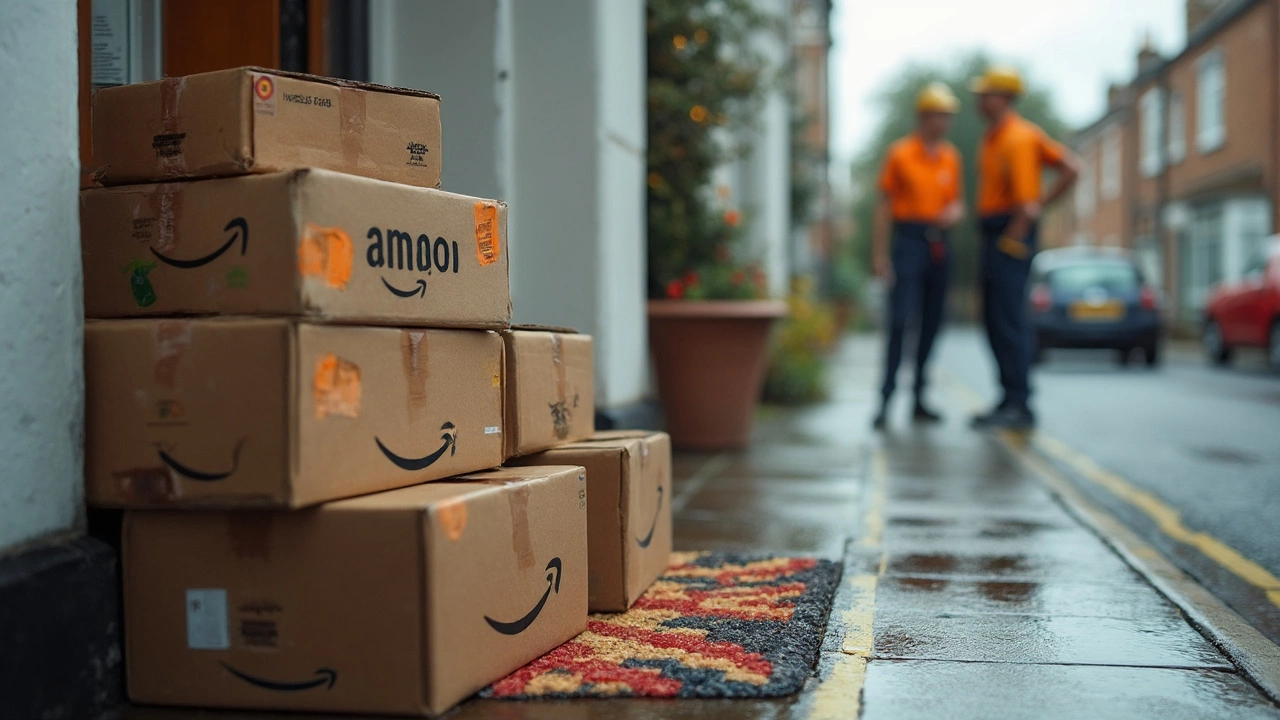
Tips for a Smooth Delivery Experience
If you’re tired of playing delivery tag with your Amazon driver or having packages left out in the wild, you’re not alone. There are some simple ways to take control, whether the delivery comes via classic Amazon delivery or through the Amazon logistics network.
First, keep your Amazon account info up to date. It sounds obvious, but old phone numbers or unclear addresses trip up deliveries more often than you’d expect. Adding delivery notes—like gate codes or "leave at back porch"—really helps drivers.
- Use Amazon’s delivery options: Amazon now lets you pick a specific delivery day (Amazon Day Delivery) or select "secure location" at checkout. If you’re worried about porch pirates, pick an Amazon Locker or Amazon Counter nearby to grab your order on your own schedule.
- Monitor your notifications: Turn on order notifications in the Amazon app. You’ll get real-time updates, so you know when your package is on the way. If you see "Out for delivery with Amazon Logistics," expect it anytime between early morning and late evening—Amazon drivers work longer hours than most traditional couriers.
- Double-check package tracking: Amazon’s “Photo on Delivery” feature snaps a picture of your package once it’s dropped off. That way, you know if it’s at your door, in the mailroom, or hiding behind a plant.
- Don’t ignore delivery attempt alerts: If Amazon Logistics can’t deliver—maybe your buzzer didn’t work—you’ll get a notice with instructions for rescheduling or picking up your package from a nearby pickup point.
If you’re ordering something expensive, it’s worth opting for signature on delivery or choosing a drop-off location. And don’t forget: sellers who use their own shipping services (not Fulfillment by Amazon) might have different delivery windows or policies—always check your purchase details before finalizing.
| Delivery Experience Tip | Benefit |
|---|---|
| Update account info | Reduces lost or misdelivered packages |
| Add delivery notes | Helps drivers find your door quicker |
| Choose secure delivery options | Protects from theft and missed deliveries |
| Use order notifications | Gives real-time delivery updates |
| Check tracking photos | Confirms exact delivery location |
Here’s a simple stat: a 2024 survey found that packages delivered by Amazon Logistics had a 25% higher "delivered to secure location" rate compared to third-party couriers. That’s a good reason to tweak those delivery settings next time you check out.
